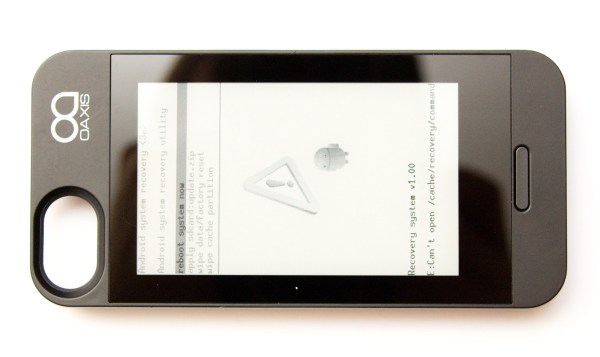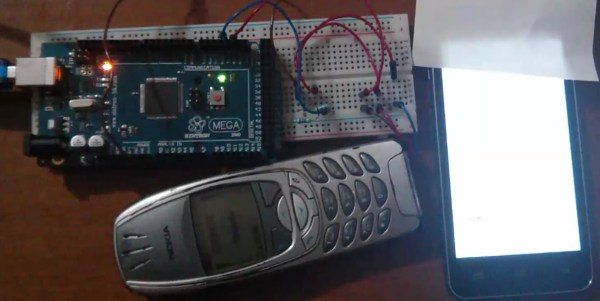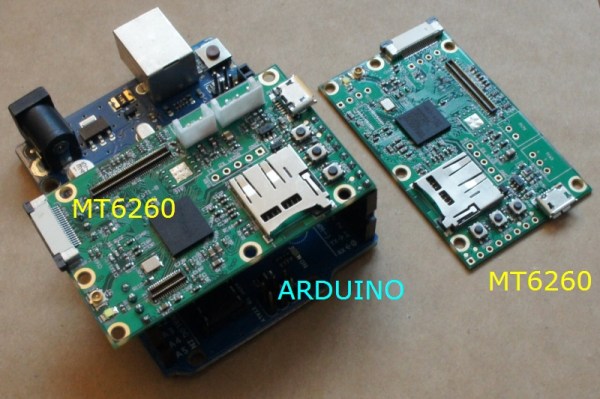Cellphones! Cellphone cases! Now that Radio Shack is kaput we need to pick up the slack!
A company named Oaxis has been making cell phone cases for a while now, and they’ve recently rolled out something rather interesting – a cell phone case with an e-ink screen. It’s an interesting idea and [Anton] did a teardown on two new releases. The first one just sends an image to an e-ink screen, and on paper, that’s all the second one does as well. There’s something special hidden under the hood, though: a low-end Android system. What an age to live in.
Something interesting happened when [Anton] was futzing with the battery for the e-ink iPhone case. Somehow, the device booted into recovery mode. Android recovery mode. Yes, iPhone cases now run Android.
Inside the e-ink iPhone case, [Anton] found a board with a Rockchip RK2818 SoC. This is the same chip that can be found in cheap Android cell phones. There’s only one button on the cell phone case, and connectivity is only provided by Bluetooth LE, but the possibilities for modding a cell phone case are extremely interesting.


















